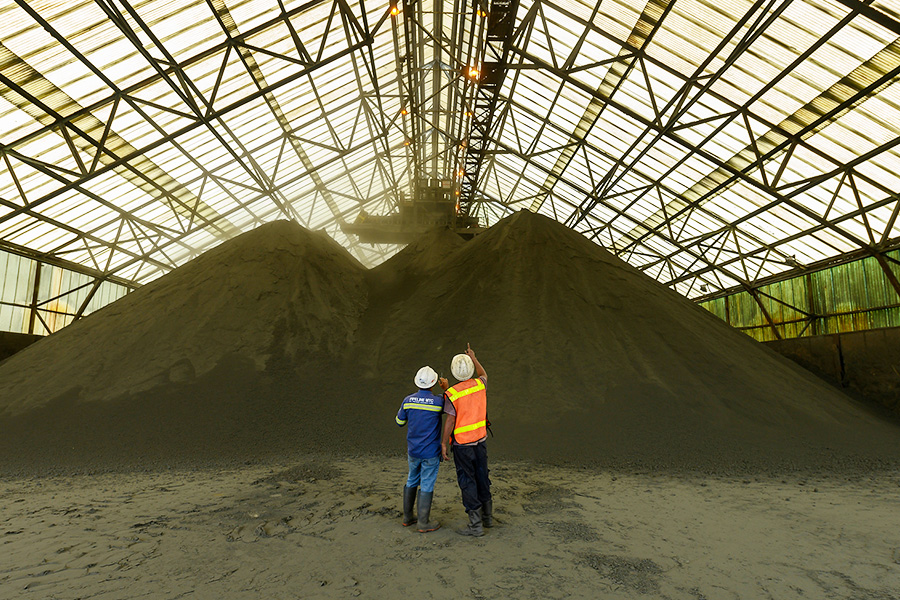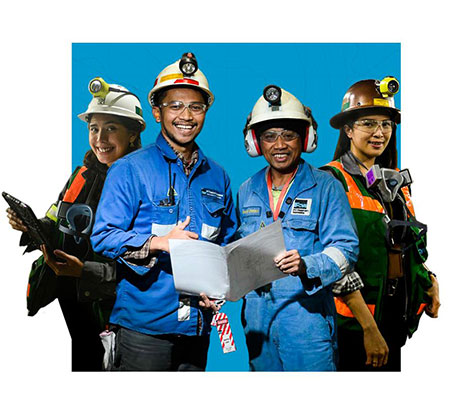16 December 2021

"Are you going to Freeport? so you will be seeing some gold, right?”
"How much gold does Freeport have?”
Those are questions and perceptions most people have about the mineral Freeport or PT Freeport Indonesia (PTFI) produces. A detikcom team had occasion to visit 2 of Freeport’s major mines in Tembagapura, Mimika, Papua to take a closer look at PTFI’s mining process and the product it produces. To travel to Freeport, or its underground mining complex, the journey begins in Timika by climbing aboard a bullet-proof bus heading to Tembagapura for a more or less 2.5 hours trip, escorted by a security task force squad. Upon arriving in Tembagapura we moved to another equally huge bus, which proceeded to traverse a steep and winding road towards the underground mining complex. At the foot of Mount Sudirman, to be precise at mile 74, we spotted several plants processing the mineral produced, or ore. Further on, in the belly of the earth we could see the entrance to the underground mining area, the Ali Budiardjo Tunnel. It is in this area that ore is initially explored.
Executive Vice President of Operations and Chief Mine Engineer, Carl Tauran explained the Underground Mine has 4 parts: Big Gossan, Deep Ore Zone (DOZ), Deep Mill Level Zone (DMLZ) and Grasberg Block Cave (GBC). "We employ just two mining methods, open-stop mining dan block caving. Typically, the biggest difference is that in block-caving the mine is bigger and production could be on a massive scale. Meanwhile production at an open-stop mining operation is not massive and the mine is small,” Carl informed detikcom in his office in Tembagapura, Papua, some time ago. In underground mining the block-caving method is dominant, with ore undercut, or cut from below and then blasted to collapse on its own weight and by gravity. This collapsed ore is then drawn out and hauled to a crusher.
After it is crushed, the ore is delivered to the processing plant to separate the minerals with economic value from the dross (tailings). From this processing operation, concentrate (in the form of slurry that is 65% solid) is pumped to Portsite through a 115 km-long pipeline. Upon arriving at Portsite, the concentrate is dewatered to produce the final product from PTFI’s mining operation, concentrate, which is then shipped out to a smelter. This concentrate is what is more frequently misconceived to be gold chunks or gold bars. "There is gold, yes, but we are a copper mine. Gold and silver are associated products from our copper production. 1 ton of mined ore will contain1-1.5% copper and a gold grade of 0.5-1 grams of gold. The mining of 150-180 tons of ore per day produces 8,000 – 9,000 tons of copper concentrate,” added the man who has worked at PTFI for 27 years. The concentrate shipped to smelters has a texture similar to fine cement with a dark grey color and a distinct metallic odor.
The concentrate is shipped out to smelters, among others the one PTFI built in 1996 in Gresik, East Java, to be made into copper cathodes that are used in downstream copper industries, such as for instance, to produce electronic instruments, automotive parts, manufacturing parts, and so on.
For the record, detikcom in conjunction with MIND ID launched the program Jelajah Tambang (Exploring Mining) on conducting expeditions to mining areas across Indonesia. detikcom visited industrial towns in Indonesia to take photographs comprehensively depicting how communities and mineral-producing regions live, and how minerals are processed.
Kami menghimbau para pencari kerja untuk berhati-hati dan mewaspadai beragam modus penipuan perekrutan yang mengatasnamakan PT Freeport Indonesia. Dalam setiap proses rekrutmen dan penerimaan karyawan, PT Freeport Indonesia maupun konsultan rekruitmennya tidak memungut biaya apapun.
Untuk melihat lowongan, silakan akses melalui link berikut: ptfi e-recruitment
Untuk melihat informasi magang, silakan akses melalui link berikut: Internship Program
